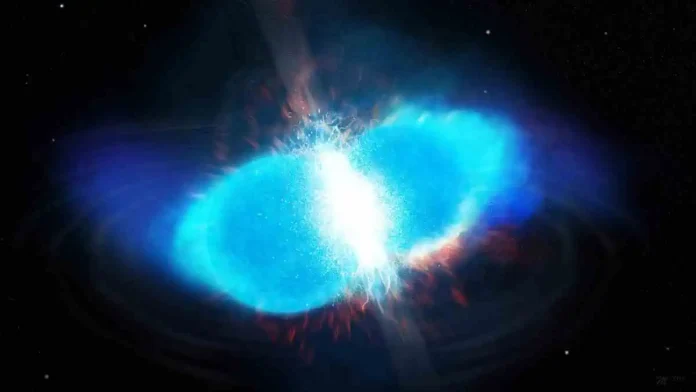The universe, a vast expanse of cosmic marvels, continues to astonish scientists with new revelations. Recent studies have unveiled compelling evidence suggesting that nuclear fission might have a crucial role in the formation of heavy elements across the cosmos, challenging established theories about the origins of such elements.
1. Understanding Heavy Element Production
Traditionally, the prevailing notion among astrophysicists was that heavy elements beyond iron primarily emerged from cosmic occurrences like supernovae or the merging of neutron stars. However, groundbreaking research now proposes an alternative theory—that nuclear fission might be responsible for producing these heavier elements in the universe.
2. Role of Fission in Cosmic Processes
Dr. Matthew Mumpower, a prominent theoretical physicist at Los Alamos National Laboratory, spearheads this paradigm shift. Collaborating with researchers, Mumpower’s work has revealed a correlation between specific elements in ancient stars, indicating a potential connection to the process of nuclear fission.
3. Matthew Mumpower’s Contribution
Mumpower’s fission model, developed alongside Ian Roederer of North Carolina State University, has been instrumental in predicting and guiding observational discoveries. The model challenged previous assumptions, suggesting that heavy elements might be formed through a process involving fission.
4. Redefining Astrophysical Understanding
The implications of these findings are profound. It redefines our understanding of astrophysics and element formation. Notably, the research hints at the possible existence of an element with a mass of 260, expanding the known boundaries of the periodic table.
5. Fission: From Theory to Validation
The concept of fission in cosmic events has been a subject of scientific curiosity for decades. However, recent data observations aligning with fission predictions provide substantial validation for this theoretical framework.
6. Fission Models and Data Interpretation
In the absence of direct measurements, models have been crucial. These models have filled critical gaps in understanding cosmic events and have demonstrated remarkable reliability in interpreting experiments.
7. Theoretical Insights into Element Formation
Understanding the processes behind element synthesis is pivotal. Fission, known from nuclear reactors, is now speculated to be a key factor in forming heavy elements, opening doors to further exploration and discovery.
8. Future Implications and Exploration
These groundbreaking revelations mark a new era in astrophysical studies. The potential implications are vast, urging scientists to delve deeper into cosmic events, offering a rich avenue for future research and observation.
In conclusion, the recent research on nuclear fission’s role in heavy element formation reshapes our cosmic narrative. The confirmation of fission in the universe not only validates theoretical frameworks but also propels us toward new frontiers of understanding the cosmos and its intriguing mysteries.
9. Unique FAQs
This discovery challenges traditional beliefs regarding the origins of heavy elements, offering a new perspective on element formation in cosmic events.
Dr. Mumpower’s model and collaboration with other researchers were instrumental in identifying correlations indicating the presence of fission in cosmic element formation.
The potential existence of such an element expands the known boundaries of the periodic table, pushing the limits of our understanding of matter in the universe.
It opens avenues for further exploration, encouraging scientists to delve deeper into cosmic events and refine our understanding of heavy element production.
Fission models serve as valuable tools, aiding in the interpretation of experiments and providing insights into cosmic processes where direct measurements are limited.
Related:


[…] Nuclear Fission in the Formation of Heavy Elements in the Universe […]